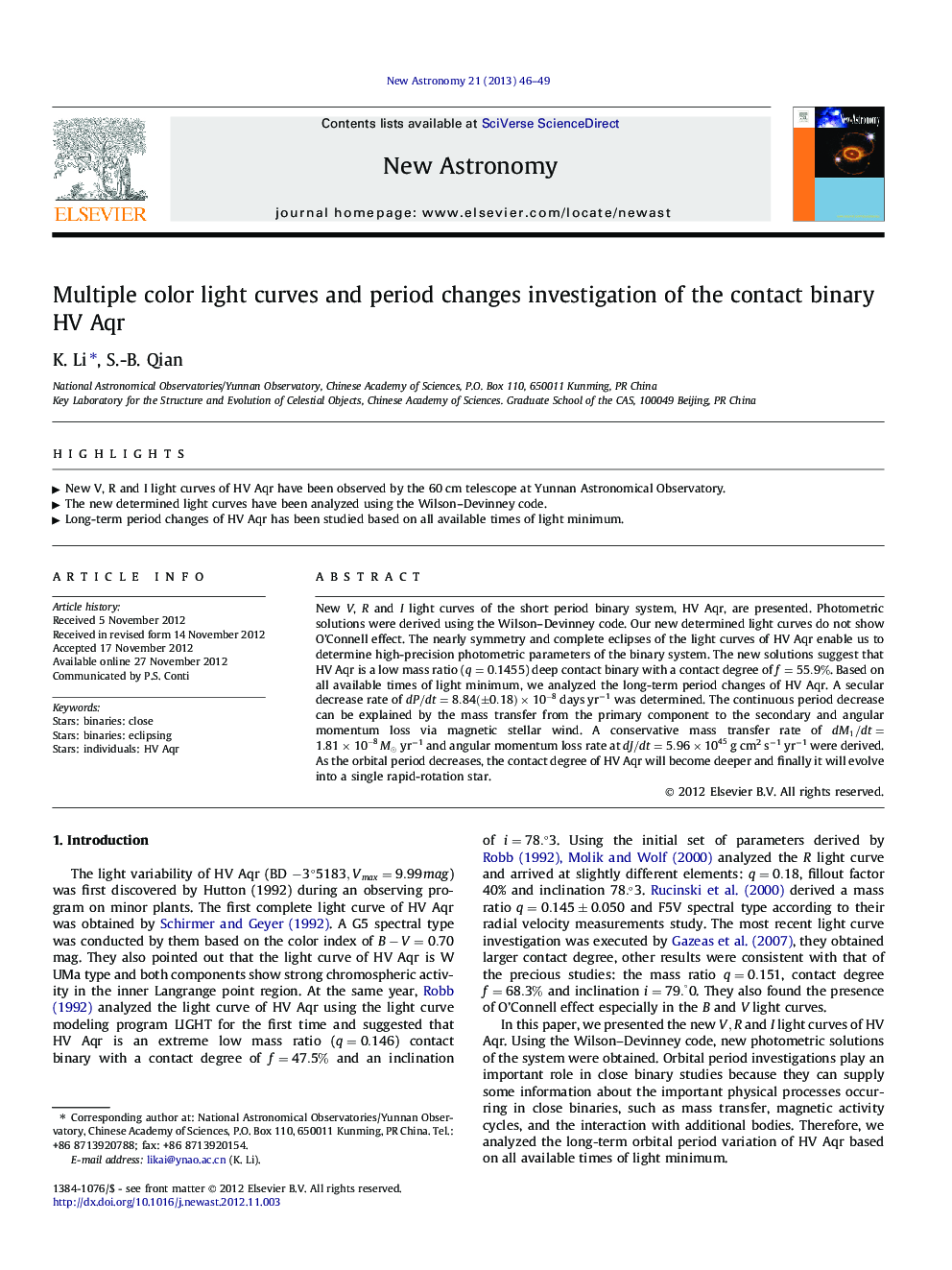| Article ID | Journal | Published Year | Pages | File Type |
|---|---|---|---|---|
| 1779100 | New Astronomy | 2013 | 4 Pages |
New V, R and I light curves of the short period binary system, HV Aqr, are presented. Photometric solutions were derived using the Wilson–Devinney code. Our new determined light curves do not show O’Connell effect. The nearly symmetry and complete eclipses of the light curves of HV Aqr enable us to determine high-precision photometric parameters of the binary system. The new solutions suggest that HV Aqr is a low mass ratio (q=0.1455q=0.1455) deep contact binary with a contact degree of f=55.9%f=55.9%. Based on all available times of light minimum, we analyzed the long-term period changes of HV Aqr. A secular decrease rate of dP/dt=8.84(±0.18)×10-8dP/dt=8.84(±0.18)×10-8 days yr−1 was determined. The continuous period decrease can be explained by the mass transfer from the primary component to the secondary and angular momentum loss via magnetic stellar wind. A conservative mass transfer rate of dM1/dt=1.81×10-8M⊙ yr−1 and angular momentum loss rate at dJ/dt=5.96×1045dJ/dt=5.96×1045 g cm2 s−1 yr−1 were derived. As the orbital period decreases, the contact degree of HV Aqr will become deeper and finally it will evolve into a single rapid-rotation star.
► New V, R and I light curves of HV Aqr have been observed by the 60 cm telescope at Yunnan Astronomical Observatory. ► The new determined light curves have been analyzed using the Wilson–Devinney code. ► Long-term period changes of HV Aqr has been studied based on all available times of light minimum.
